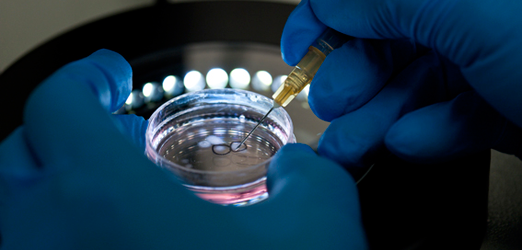Genome editing

INGESTEM offers the latest in genome engineering technologies to transform stably and efficiently iPSC lines and their cellular derivatives.
Key steps
Design of the genomic modification strategy
- Gene correction
- Excision of exons / introns
- Mutagenesis
- Insertion of long fragments of DNA
Transformation and selection of the lineage of interest
Quality control of the modified IPS cell line
Techniques targeting modifications of the genome using TALENs (TAL effector nucleases) or CRISPR (short palindromic repeat regions and regularly spaced) / Cas9 systems, can create mutations or correct genetic damages in specific genomic loci. Artificial nucleases can also induce specific double strand breaks in DNA. This method stimulates non-homologous end joining repair system (prone to error), or homologous recombination using as a template a corrected version of the gene of interest.
Applied to pluripotent stem cells in vitro and in vivo, these strategies offer new options:
- Mutation correction and generation of control isogenic iPSC and derived cells
- Point mutations and models of the molecular polymorphism in pathologies
- Reporter systems integrated into the genome of a iPSC-derived cell line / screening of chemical libraries on a phenotype of interest, through a specific transcriptional activity.
- Activation / repression of gene expression
For more information, please contact us.

